A little while ago, I wrote an article bemoaning the demise of nicknames for National Hockey League arenas, and proposing some new ones to restart the trend.
Lack of nicknames aside, the actual names of the league’s current buildings are, by and large, utterly terrible and devoid of all notions of excitement and wonder. I mean, I’m sitting here watching the Stanley Cup Playoffs and just can’t get excited about buildings called “Bridgestone Arena” or “Bell MTS Place.”
Professional sports leagues and their franchises wax lyrical about their teams and athletes, likening them to gladiators or troops or whatever other nonsense the marketing department’s come up with this week.
While fans are, generally, smart enough to see through these trite tropes, it’s not as though sports are wholly unimportant. They’re a unique part of the human experience that can bring people together in the best and worst of times, eliciting passion and fervour from cities, provinces/states, and even entire countries. In many areas, the fan experience borders on the spiritual, as if going to a game is paying homage to their heroes at a temple of worship.
So, given the importance of sports to the lives of billions, the question needs to be asked: Why are NHL arena names so terrible?
Original Six Era Sets the Bar
The Original Six era was the gold standard for arena names, make no mistake. The Detroit Olympia. The Montreal Forum. And, of course, three garden-related venues, of the Boston, Madison Square and Maple Leaf varieties.
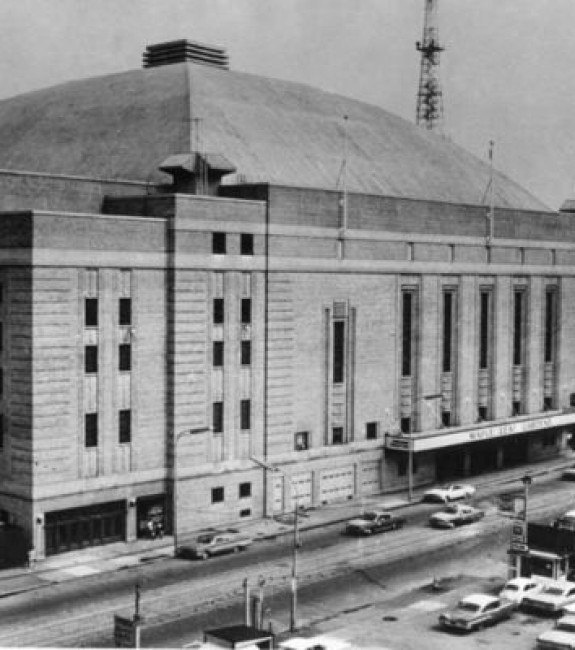
Really, only the Chicago Stadium stands out as having had a pedestrian name, though the nickname “Madhouse on Madison” surely lent some credence to the legendarily quirky facility.
Even the first few decades of NHL expansion were passable, with arena names like Auditorium (Buffalo Sabres), Corral (Calgary Flames), Palace (San Jose Sharks, Tampa Bay Lightning) and the Spectrum (Philadelphia Flyers). There was even a Coliseum Arena (California Seals Oakland Seals California Golden Seals).
Corporate Dollars, Corporate Responsibility
Alas, with corporate dollars comes corporate responsibility. Building owners and operators saw an opportunity to sell off the naming rights for their properties and jumped at the chance to add some extra money to their coffers. With Toronto’s Air Canada Centre being renamed Scotiabank Arena this summer for the eye-watering price of $800 million, can you really blame them?
Yes, yes we can.
Take the Rogers Centre, home of the Toronto Blue Jays, as an example: Originally the SkyDome – a name chosen by the public and beloved by fans, Rogers named the venue after itself in 2005.
But why call it the Rogers Centre? Why not the Rogers SkyDome? Why change something everybody loved?
All they’ve done is ruin the mystique of a hallowed sports ground – that was also an architectural marvel in its day, I might add.
NHL Arena Names Soulless
Want to know how soulless the NHL has become?
Consider this: For the 2017-18 season, there were only five names for the venues NHL teams played in. That’s right, five.
Even more shocking, two of these names alone adorned the buildings of 26 of the 31 teams!
Here’s how the venues broke down:
There were 16 “Centers/Centres,” 10 “Arenas,” two “Gardens” and two “Places.” The lone standout to warm the cockles of our hearts is the (Scotiabank) Saddledome.
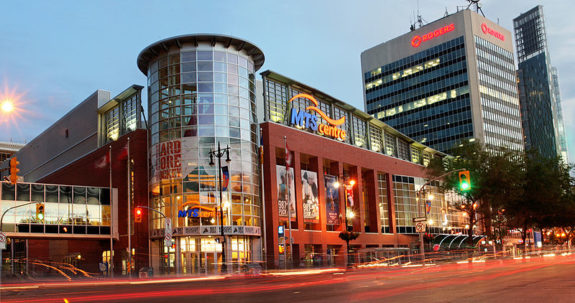
See? Even taking corporate names out of the equation entirely, NHL arena names have all the importance and imagination of the colour beige.
Solution for NHL Arena Naming
So what, then, is the solution?
Well, why can’t the owners and operators of NHL arenas give their properties a kick-ass name, and then stipulate whoever buys the naming rights can put whatever they want around it, so long as said name remains?
The corporations paying millions of dollars for the rights would still get to splash their name on everything, while fans and commentators alike would experience much less confusion now that arenas don’t change names every couple weeks.
To make things even easier for the powers that be, here are 26 wicked names for an arena, along with the NHL team that would best suit it. The other five teams would play in buildings named from the current range of monikers, determined according to the length of time arenas have used a given name – or, in the case of the Saddledome, a lack of viable alternatives.
NHL Exemptions From Arena Renaming
Madison Square Garden (home of the New York Rangers)
The Rangers get a pass because Madison Square Garden (or MSG) is an iconic building. Or, rather, an iconic series of buildings all called the same thing, for some reason.
Regardless, they’ve played at some iteration of MSG since 1926, so “Garden” is all theirs.
Nationwide Arena (Home of the Columbus Blue Jackets)
Nationwide Arena has housed the Blue Jackets since their NHL debut in 2000-01, having retained the very same name ever since the arena’s opening – the longest such stretch amongst NHL arenas actually named “Arena.”
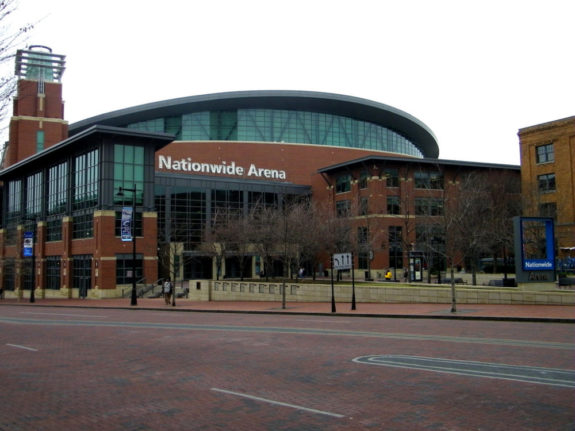
Plus, getting more meta, the “Nationwide” part of the name symbolises the ideal of unity within the United States, which was fought for by the namesakes of the Blue Jackets franchise and remains, to this day, a shining beacon of hope in an often-fragmented world.
Or it’s just an insurance company. Your call.
Rogers Place (Home of the Vancouver Canucks)
“Wait,” you’re saying. “Don’t the Canucks play at Rogers Arena? Isn’t it the Edmonton Oilers who play at Rogers Place?”
Yes, you’re absolutely right.
However, Rogers Arena was known as General Motors Place – Canada Hockey Place when Vancouver hosted the Winter Olympics – from its opening in 1995 until Rogers took over the naming rights in 2010. Some people still call it GM Place, whether out of habit or the fact it just rolls off the tongue more easily.
Anyway, as you’ll see in a bit, Edmonton has a sweet new name for their barn – as does Winnipeg, the other “Place”-holder (see what I did there?!), so the “Rogers Place” name will be free for use.
Saddledome (Home of the Calgary Flames)
I mean, the Flames’ building is, quite literally, shaped like a saddle. It’s such a unique design that any other name wouldn’t really fit.
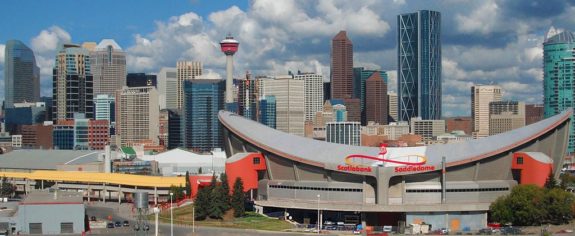
Plus, every entity that’s owned the naming rights has retained the “Saddledome” moniker. What’s not to like?
United Center (Home of the Chicago Blackhawks)
The Blackhawks have called the United Center home since its opening in 1994. Well, technically, they didn’t start playing there until 1995, because the NHL was going through one of its many lockouts, obliterating half of the 1994-95 campaign.
Regardless, they’ve played in a building named “Center/Centre” longer than anyone else, having played their first 1994-95 home game a day earlier than the St. Louis Blues. Thus, the Blues and the 14 other teams using “Centre/Center” can get stuffed.
*cues Chelsea Dagger*
New Names for NHL Arenas
Amphitheater (Renamed from the STAPLES Center, home of the Los Angeles Kings)
The STAPLES Center, despite being open for less than two decades, has already become an iconic venue in the realms of sporting and entertainment.
STAPLES is home to four professional sports teams, and is a prime venue for the litany of other events taking place in one of the world’s foremost centres of entertainment. “Amphitheater” is the perfect complement to the well-earned, world-class reputation of the building.
Bandhouse (Renamed from Scottrade Center, home of the St. Louis Blues)
What better way to celebrate St. Louis – not to mention a team literally called the Blues – than a nod to the musical underpinnings of the city’s culture scene?
Barn (Renamed from Bridgestone Arena, home of the Nashville Predators)
Bridgestone Arena is regarded as one of the most raucous buildings in the entire NHL, matching the excitement and success of the Predators’ on-ice product. Many a Nashville game can be described as a “barnburner.”
Additionally, there is the well-documented country music connection in Nashville. And you know what you find a lot of in the country? Barns.
Furthermore, Bridgestone has the arena’s naming rights.; I mean, how wicked does “Bridgestone Barn” sound?!
Bowl (Renamed from KeyBank Center, home of the Buffalo Sabres)
While many arenas like to disguise their actual shape with all sorts of cladding and footprint augmentation, KeyBank Center is literally just a bowl. Google an aerial view of it; it’s a no-nonsense facility, at least from an architectural perspective.
While it would have been nice to pay homage to the old Buffalo Memorial Auditorium – affectionately known as “the Aud” – by recommending “Auditorium” as the building’s new name, I don’t think it’s right to risk confusing this new building with that legendary barn.
Centrum (Renamed from PNC Arena, home of the Carolina Hurricanes)
In contrast to the perpendicular, squared-off nature of most arena surroundings, PNC Arena is surrounding by a circular parking lot. I can’t imagine it’s an ideal use of space, but it’s really neat, and fits the technical definition of “Centrum” quite nicely.
Chamber (Renamed from TD Garden, home of the Boston Bruins)
The dour, soulless-looking TD Garden is a rare blemish in what is otherwise a spectacularly beautiful and historic city.
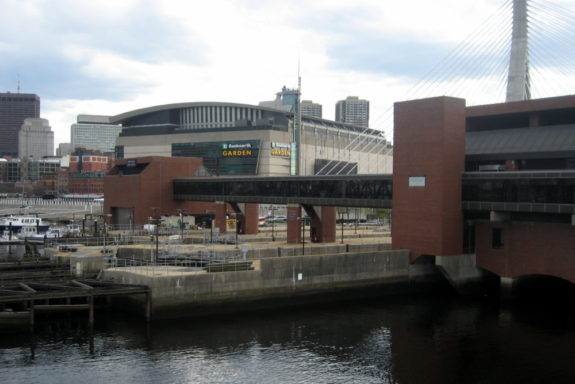
Nevertheless, the Bruins have been a team to be feared in recent years, seeming to derive limitless intimidation and momentum from their home building. Thus, “Chamber” seems fitting, both from an aesthetic sense (or lack thereof), as well as that of importance.
Circus (Renamed from Xcel Energy Center, home of the Minnesota Wild)
Right on the south side of Cleveland Circle – a literal circus (according to Google, “a rounded open space in a city where several streets converge.”), Xcel Energy Center is blessed with a really punchy-sounding sponsor whose name for the building is only tempered by the “Center” at the end.
“Xcel Energy Circus” would be a much more suitable name for the building – not to mention a much more accurate one, given its aforementioned geographical surroundings.
Coliseum (Renamed from the Pepsi Center, home of the Colorado Avalanche)
Colisée Pepsi in Québec City housed the Québec Nordiques from their debut in the World Hockey Association in 1972 until their departure for Denver in 1995.
It’s already hilarious the Avalanche’s new building, ready for the 1999-2000 season, was named the Pepsi Center, but why not go all the way and rename it the “Pepsi Coliseum?” It would not only further twist the knife in Nords fans, but would also simply be a much cooler name all around.
Crossing (Renamed from PPG Paints Arena, home of the Pittsburgh Penguins)
PPG Paints Arena sits right near the confluence of the Allegheny, Monongahela and Ohio rivers.
Well, okay, not right there, but close enough.
*Googles walking distance*
…okay, so it’s a reasonable distance away from the confluence of the Allegheny, Monongahela and Ohio rivers. But, if you zoom out on Google Maps, you can make it look like it’s quite close.
In all seriousness, the intersection of the three rivers is one of the most unique and defining geographical features of Pittsburgh, so naming a building after it shouldn’t be all that disruptive.
Crossroads (Renamed from Bell MTS Place, home of the Winnipeg Jets)
Bell MTS Place is just steps from the intersection of Portage Avenue and Main Street, not only a major intersection in Winnipeg, but also known as the “Crossroads of Canada,” on account of its proximity to Canada’s longitudinal centre.
Fortress (Renamed from T-Mobile Arena, home of the Vegas Golden Knights)
Vegas fans already call the imposing T-Mobile Arena “the Fortress,” which makes my job a whole heck of a lot easier.
Even though the new name would skew towards the hockey occupants of the venue, “T-Mobile Fortress” would be a name conveying the formidable strength of whatever occupants it happens to be housing on a given night.
Plus, it pays homage to the notoriously complex webs of security that hold together Vegas’ gambling industry, a vaunted system penetrable only by a dozen (give or take one) sharply dressed individuals who are all well-known to authorities but who casinos inexplicably keep letting in anyway.
I don’t see a downside.
Glade (Renamed from the BB&T Center, home of the Florida Panthers)
It’s tough to find anything really distinguishing about the surroundings of the BB&T Center. I’ve heard nothing but good things about the in-arena experience, but the building appears to be surrounded by nothing but parking lots, as far as the eye can see.
That said, only an expressway lies between BB&T, and the Everglades and Francis S. Taylor Wildlife Management Area, making “Glade” an arena name thoroughly unique to South Florida.
Hall (Renamed from the American Airlines Center, home of the Dallas Stars)
The spectacular façade of the American Airlines Center harkens bad to the awe-inspiring architecture of old, when buildings were made not just with consideration to function, but also to style.
Just as often as not, such grandiose structures were given traditional, unassuming names, “Hall” being one of them.
“American Airlines Hall” does not necessarily titillate the senses, but, call it “the Hall” often enough and the building has a chance to become iconic in its own right.
Hippodrome (Renamed from Barclays Center, home of the New York Islanders)
Barclays Center is located in Brooklyn, one of the most hipster locales in all of America. Thus, why not give Barclays one of the most hipster names possible for an entertainment venue?
The Islanders ranked dead-last in the NHL for attendance in 2017-18. If they can get a few more heavily bearded folks wearing Blundstones and reading a rare edition of some obscure book through the door, that can only be a good thing, right?
Iceberg (Renamed from Rogers Place, home of the Edmonton Oilers)
Not only is Rogers Place shaped sort of like an iceberg, it’s also located in Edmonton’s ICE District. Plus, I mean, have you been to Edmonton in the winter?
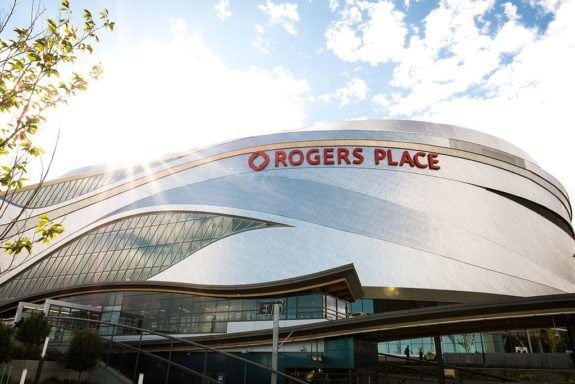
Junction (Renamed from Wells Fargo Center, home of the Philadelphia Flyers)
Wells Fargo Center sits at the intersection of two major roads in Philadelphia, Broad Street and I-95; at the junction of the two, if you will.
Plus, “Junction” is a gritty, abrasive name, making it the perfect arena name for a passionate sports city best known for its gritty, abrasive fans.
The arena was originally to be known as Spectrum II, but its naming rights were sold before the building ever opened. “Spectrum” was something I considered for the Flyers’ arena, but, like with Buffalo and “Auditorium,” I didn’t feel it right to risk diluting the importance of the name, given the importance of Philadelphia’s original Spectrum.
Palace (Renamed from Little Caesar’s Arena, home of the Detroit Red Wings)
The Red Wings already thoroughly ripped off the Golden Knights in the Tomas Tatar trade, so why not go double or nothing and rename their new home “Little Caesar’s Palace?”
Palladium (Renamed from the Canadian Tire Centre, home of the Ottawa Senators)
Fun fact: The Palladium was actually the original name for what is now the Canadian Tire Centre. The building is even located on Palladium Drive!
This incredible name would also distract from the fact the building is literally located in the middle of nowhere. Seriously. Google-Map it and switch to Satellite view.
Pavilion (Renamed from the SAP Center, home of the San Jose Sharks)
The SAP Center used to be known as the HP Pavilion. The name carries quite a lot of importance and style, so why not just call the arena the “SAP Pavilion?”
Pond (Renamed from the Honda Center, home of the Anaheim Ducks)
The Honda Center was known as Arrowhead Pond for over a decade, thanks to a sponsorship from Arrowhead Water. Obviously, “Pond” reflected both the then-Mighty Ducks’ name, as well as the holder of the arena’s naming rights.
In the present day, “Pond” would still work brilliantly as the name of the Ducks’ home, so why not bring back this unique moniker?
Rock (Renamed from the Prudential Center, home of the New Jersey Devils)
The Devils’ arena is already known colloquially as “the Rock,” on account of the logo of naming rights holder Prudential Financial, which features the Rock of Gibraltar.
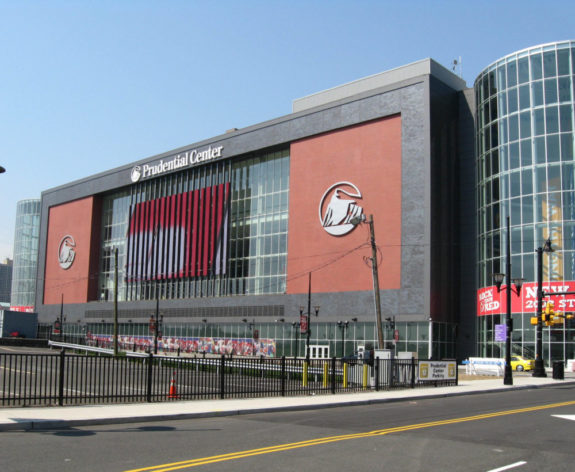
Would it really be that much of a leap to rename it “Prudential Rock?” I mean, Prudential shouldn’t be that worried; their logo is literally a rock! Plus, they’ve got the naming rights for almost a decade more, so it won’t go out of style anytime soon.
Square (Renamed from Gila River Arena, home of the Arizona Coyotes)
Gila River Arena is located in the midst of the massive Westgate Entertainment District, a collection of anything and everything entertainment for the residents of Glendale.
The insular, almost communal nature of the development gives it a very localised feel, meaning “Gila River Square” would be an ideal rebrand for the embattled arena.
Stade/Stadium (Renamed from the Bell Centre/Centre Bell, home of the Montréal Canadiens)
While “le Stade Bell” (“Bell Stadium,” for the unfrançais) wouldn’t necessarily raise pulses, it doesn’t have to. The century-plus of history – not to mention the unrivalled franchise success – of its sole professional sports occupant, the Montréal Canadiens, can do that on its own.
“Stadium” is a proper, dignified name for the arena of such a distinguished franchise. Now, if they can only assemble a proper, dignified team…
Station (Renamed from Capital One Arena, home of the Washington Capitals)
Capital One Arena is situated directly on top of Gallery Place, a major transfer point in the Washington Metro network.
While “Capital One Station” may cause some confusion for visitors attempting to navigate D.C.’s public transit system, it could certainly become a name easily identifiable with the arena itself, given how many teams and events it plays host to.
Terminal (Renamed from the Air Canada Centre, home of the Toronto Maple Leafs)
The Air Canada Centre (or ACC) is attached to Union Station, Canada’s busiest transportation hub – and the bane of existence for the hundreds of thousands of Greater Toronto Area residents forced to use it every day. Thousands of people waiting for a train? Great! Cram them all into a grand total of two staircases – that are also being used by everyone getting off that same train.
Like most Toronto sports teams, Union Station is perennially under construction, with no one quite able to figure out why they can never seem to finish the job. Plus, even though, as mentioned, Scotiabank has purchased the naming rights for the ACC, “Scotiabank Terminal” would also be a cheeky reference the building’s original name.
ThunderDome (Renamed from Amalie Arena, home of the Tampa Bay Lightning)
When they first entered the league in 1992-93, the Lightning played in Tampa’s tiny Expo Hall, before moving to the Florida Suncoast Dome (now Tropicana Field) the following season, a building temporarily renamed “the ThunderDome,” just for the Bolts.
Since the Lightning spent only three seasons there before moving to their current home, why not pay homage to their history – and re-use a fantastic name, and rename the building the “Amalie ThunderDome?” Amalie’s roof is even rounded, to boot!
NHL Arenas Have No Excuse for Banality
Thus, the shocking lack of diversity in building names is clearly due not to corporate caution, but instead to an utter lack of imagination – with a healthy dollop of laziness, no doubt. There is simply no excuse for two NHL buildings, let alone 16, having the exact same name.
With my patented strategy of, you know, using a thesaurus, naming rights holders would still get to slap their name and logo on NHL buildings, while residents would get something thoughtful and unique to call one of the busiest ports of call in their respective cities.
If there’s a downside to this, I’m not seeing it.